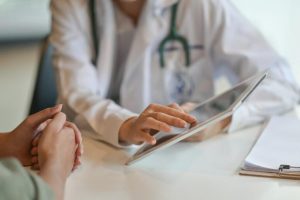Stanford doctors used Epic’s EHR in conjunction with Apple HealthKit and a Dexcom G4 CGM continuous glucose monitoring to integrate patient data into physicians workflow and, in turn, enhance the relationship with patients in a study, according to a new article published in the Journal of the American Medical Informatics Association.
“We believe this is the first published report detailing how widely available consumer technology can enable automated integration of patient data into a health system EHR,” researchers wrote. “Here we demonstrate two things: first, continuous information delivery is feasible through the use of commonly owned mobile devices. Second, passive EHR-based data delivery, coupled with automated triage and intuitive visualization, facilitates more efficient provider workflow for reviewing data and improved communication with patients. In our pilot, this was associated with better care between scheduled clinic visits.”
The 10 participants in the pilot were the “first 10 interested patients during standard pediatric diabetes clinic visits who were already using a Dexcom CGM and used an iOS device.” They included children and adolescents, and pump-users as well as those treating their diabetes with multi-dose injections.
Stanford built one tool themselves, which they have subsequently made available for free download, to maximize the possibility of other organizations duplicating their results. GluVue, a data visualization tool, helped doctors to spot patterns in patients’ glucose readings that they could then follow up on. The report included some specific examples.
“For one toddler, intermittent nocturnal hypoglycemia was identified, prompting communication with his mother,” they wrote. “Discussion revealed that on occasions when the patient had hyperglycemia at bedtime, his family administered additional rapid-acting insulin using his dinnertime dose regimen. Less aggressive late-evening dosing was recommended, and a new insulin dose calculation sheet was securely forwarded to the family via MyChart. Subsequent monitoring demonstrated resolution of nocturnal hypoglycemia.”
Engagement was particularly high among teens, according to the report. Data visualization helped one teen girl to realize she was not counting her carbs properly; correcting that improved her glycemic control. For a teen boy, the data helped doctors and parents discover a correlation between nights he had sports practice and a smaller required dose of insulin.
“Our patient portal not only served as the infrastructure for sharing data, but simultaneously facilitated secure discussion among adolescents, parents, and providers,” researchers wrote. “Adolescents are adept with electronic media, and the majority have their own mobile phone – including youth from low-income families, who are more likely to access the internet from their phone than a computer. Given the leading role that adolescents play in their own diabetes care, we recognize this tool as an additional means of building their self-management skills before adulthood.”
The pilot was not without technical difficulties. They reported that for some patients, the volume of data caused Epic MyChart to freeze up, a problem they rectified by limiting the number of readings sent to the EHR. But overall, the problems seem to have been minor.






























